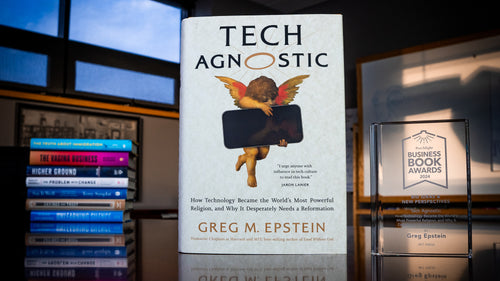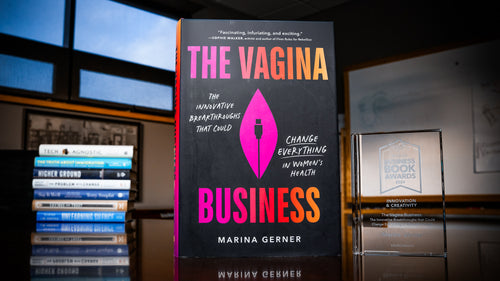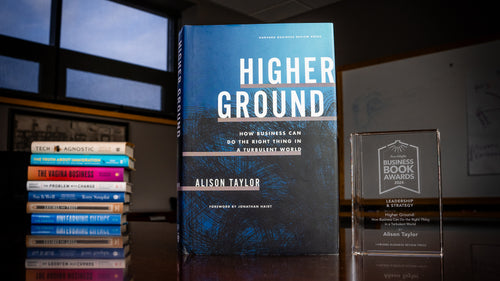Five Business Book Classics - The Essay
I wrote a piece for the July/August issue of Corporate Dealmaker. The magazine did eight pages on business books and their impact on the M&A industry. Here is my contribution where I discuss books that should be on every executive's reading list:
And Don't Forget The Classics
There are M&A books, and there are business books that should be required reading for every executive. Here are five guaranteed to help you be more productive and make smarter decisions.
by Todd Sattersten
Books on mergers and acquisitions often take a distinct nuts-and-bolts approach. No mystery there: Deals are complex projects and dealmakers want practical advice on how to execute them. Even for dealmakers, though, transactions are just part of a bigger strategic picture, on where decisions of many kinds are needed. Every executive, dealmaker, or otherwise, is ultimately judged on the quality of the decisions he or she makes, and there's no shortage of books aimed at helping those managers make smart choices. Here are five that should be on every executive's reading list.
1 - "Competitive Strategy" by Michael Porter
If you boil business down to its essence, you are left with two key elements--strategy and execution. Strategy is deciding what direction to go, and execution is how to get there. Michael Porter's "Competitive Strategy" gives us the clearest view of the first element. Strategy is about competition, and prior to the book's 1980 publication, competition was defined as other companies operating in the same industry. Porter's five forces model created a much richer view, adding suppliers, buyers, substitutes, and new players to the definition. Those added dimensions made Porter's work ground-breaking. Without Porters' model, it is hard to see how PC manufacturers' margins quickly shrank in the 1990's. The cause was not competition among industry players, but the superior bargaining power of their two primary suppliers--Intel and Microsoft. In my industry of publishing, substitutes have become the primary source of competition as readers' attention is diverted to other forms of media.
2 - "Execution" by Larry Bossidy, Ram Charan, and Charles Burck
But strategy is only one half of the equation. An organization must be able to carry out the plan and "Execution", released in 2002, is one of the best book out there on the topic. In their book, Bossidy, who spent 40 years running industrial conglomerates, Charan, who provides insights as a guru to Fortune 500 CEOs, and writer and editor Burck mapped out "a system for getting things done through questioning, analysis, and follow-through." Identifying and developing leadership talent lies at the core with the goal not to evaluate people for what they are doing today, but for the positions they will hold tomorrow. Leaders then lay out clear goals everyone in the organization can understand, follow-through to clear internal obstacles, and reward the doers who are producing results. Finally, organizations that understand execution inject a healthy dose of realism into their culture through open, informal dialogue to eliminate false consensus and by making needed changes today rather than waiting for tomorrow for things to get better.
3 - "In Search of Excellence" by Tom Peters and Bob Waterman
"In Search of Excellence", published in 1982 was the result of a McKinsey project started five years prior to find out what successful organizations look like. The authors found that the most effective organizations were those that recognized the irrationality of the humans that inhabited them. Those companies were clear about their beliefs and created a strong value system that acted as a compass for organizational decision-making. Inside companies like Boeing, 3M, and Hewlett-Packard, Peters and Waterman found small, passionate teams accomplishing big, game-changing feats and meetings taking place in hallways as executives exercised management by walking around.
4 - "Good to Great" by Jim Collins
Jim Collins also looked at successful companies in his 2001 best-seller. Using a methodical approach, Collins identified companies that went from average to sustained periods of growth. Walgreens, Pitney-Bowes, and Nucor were among the 11 companies that made the cut and his book's metaphors have become a lexicon for business in the 21st century-the flywheel, BHAGs (big hairy audacious goals), level 5 leadership, to name a few.
5 - "The Effective Executive" by Peter Drucker
Before Stephen Covey's "Seven Habits" and David Allen's "Getting Things Done", Peter Drucker det the standard for books on productivity with "The Effective Executive". Decision-making, playing to your strengths, and "first things first" are all presented with the signature clarity Drucker brought to the study of management.
Todd Sattersten is vice-president of 800-CEO-READ and author of an upcoming book from Portfolio on the 100 best business books of all time.



